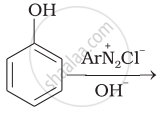Advertisements
Advertisements
Question
Classify the following amine as primary, secondary or tertiary:
(C2H5)2CHNH2
Options
Primary
Secondary
Tertiary
Solution
Primary
APPEARS IN
RELATED QUESTIONS
In the following

The compound ‘B’ is _______.
(A) Propan–1–amine
(B) Propan–2–amine
(C) Isopropylamine
(D) Dimethylamine
Isobutylamine is an example of ______.
Choose the most correct option.
Which type of amine does produce N2 when treated with HNO2?
What are amines?
How are amines classified?
Which of the following amines is most basic in nature in aqueous phase?
Assertion: Acetamide on reaction with KOH and bromine gives acetic acid.
Reason: Bromine catalyses hydrolysis of acetamide.
When aniline reacts with acetic anhydride the product formed is ____________.
\[\ce{C6H5NO2 ->[Fe/HCl] A ->[NaNO2/HCl][273 K] B ->[H2O][283 K] C}\] ‘C’ is:
Which one of the following is most basic?
How will you convert nitrobenzene into m-nitro aniline?
Write a short note on the following.
Ammonolysis
Write a short note on the following.
Mustard oil reaction
Account for the following.
Although amino group is o- and p-directing in aromatic electrophilic substitution reactions, aniline on nitration gives a substantial amount of m-nitroaniline.
Complete the following reaction.

The amine formed from an amide by mean of bromine and alkali has how many number of carbon atoms?
Which among the following is the strongest Bronsted base?
Arrange the increasing order of solubility in water.
\[\ce{C2H5Cl, C2H5NH2, C2H5OH}\]
Write short note on the following:
Ammonolysis
Write short note on the following.
Ammonolysis
